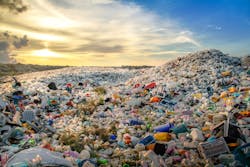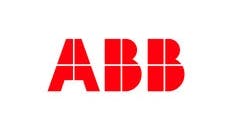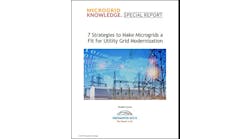Powerhouse Energy Group, a technology developer working on modular waste-to-energy solutions, has connected its plastic waste-to-energy process to a microgrid at the University of Chester’s Thornton Science Park in the UK.
The proprietary technology, the G3-UHt Distributed Modular Gasification (DMG) process, offers a potential solution for dealing with non-recyclable plastic waste.
Turning plastic waste to energy
Non-recyclable, mixed, and contaminated plastics are fed into a high temperature chamber within the DMG process, where they react with an oxidizing agent to form a fuel gas mixture, around half of which is hydrogen.
The fuel gas mixture is passed through additional processes to remove contaminants like chlorides and tar compounds. The resulting product is gas that can be burned in an engine to generate electricity, or sent to an additional step in the process to separate out the hydrogen.
Businesses with hydrogen buses or trucks that run ‘return to base operations’ may benefit from a DMG system. For example, supermarkets that run large distribution centers with trucks always leaving and returning to the same location. Non-recyclable plastic waste collected by the business could be used to supply electricity as well as generate hydrogen, creating a self-sufficient operation.
The fuel gas mixture also has a high carbon monoxide content, which could be separated and sold to a buyer.
Connecting to a microgrid
This technology was developed with microgrids in mind, to allow remote locations to locally deal with their non-recyclable plastic waste. Coupled with Thornton Science Park’s microgrid design to integrate different energy technologies, it was relatively easy to connect the system.
The Thornton Science Park microgrid features a 25 kW combined heat and power engine, 40 kW diesel generation, 5 kW solar energy system, a 75kWh battery, and a load bank, with an ABB control system. The microgrid is a test site, aiming to demonstrate how distributed energy resources can work together to reduce energy costs and emissions in island mode.
The 25 kW of electrical output from Powerhouse Energy Group’s technology is not easy to turn up and down. Thus, the system is better suited for use as base load, with the peaks of the microgrid to be met by other generating technologies or energy storage.
This technology was developed with microgrids in mind, to allow remote locations to locally deal with their non-recyclable plastic waste.
“You have the potential to stop hydrogen generation…to increase electricity output, but it will be difficult to manage the process to deal with any microgrid peaks, so you would probably run something else from the microgrid,” David Ryan, technical director at Powerhouse Energy Group told Microgrid Knowledge.
The ideal location
Ideally this technology will be co-located within a material recycling facility or waste aggregator. These sites have an electrical demand, and have to pay a fee to others to remove non-recyclable plastic. This waste stream can be used to generate cheaper electricity for the site, creating savings on energy costs as well as waste removal fees.
The company plans to offer the technology beyond the UK, with Japan being a good target. This is due to Japan’s high gate fees — the charge imposed for waste received at a waste processing facility — as well as the nation’s high electricity prices. Australia is also interested in alternative means of handling waste and hydrogen generation, as are island communities where power prices are at a premium.
The projects so far have been financed by smaller investors. Once the demonstrator plant at Thornton Science Park proves itself, and the technology risk is removed, the doors will be open to seek funding from larger investors.
Track news about innovative microgrid technologies. Subscribe to the free Microgrid Knowledge newsletter.








